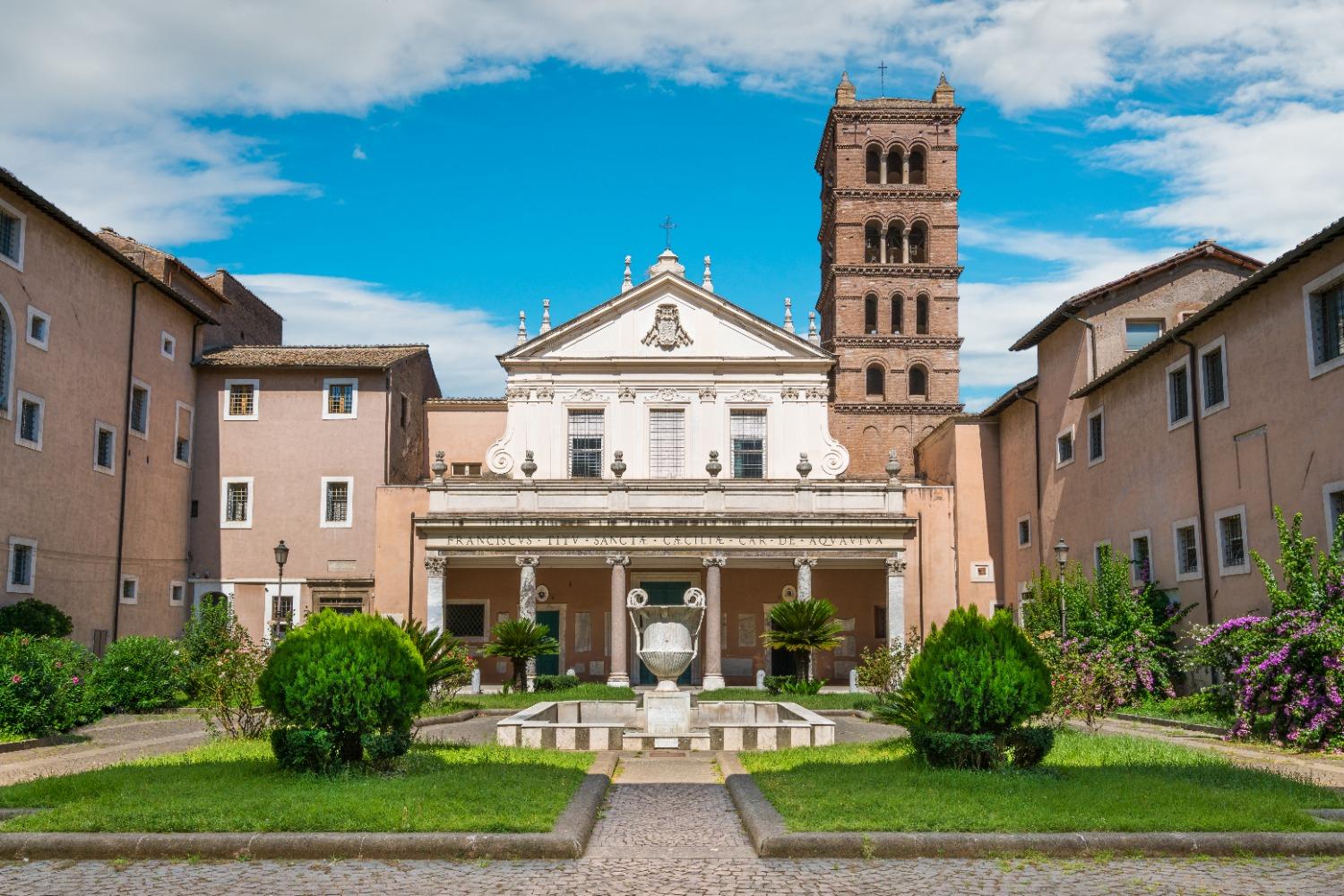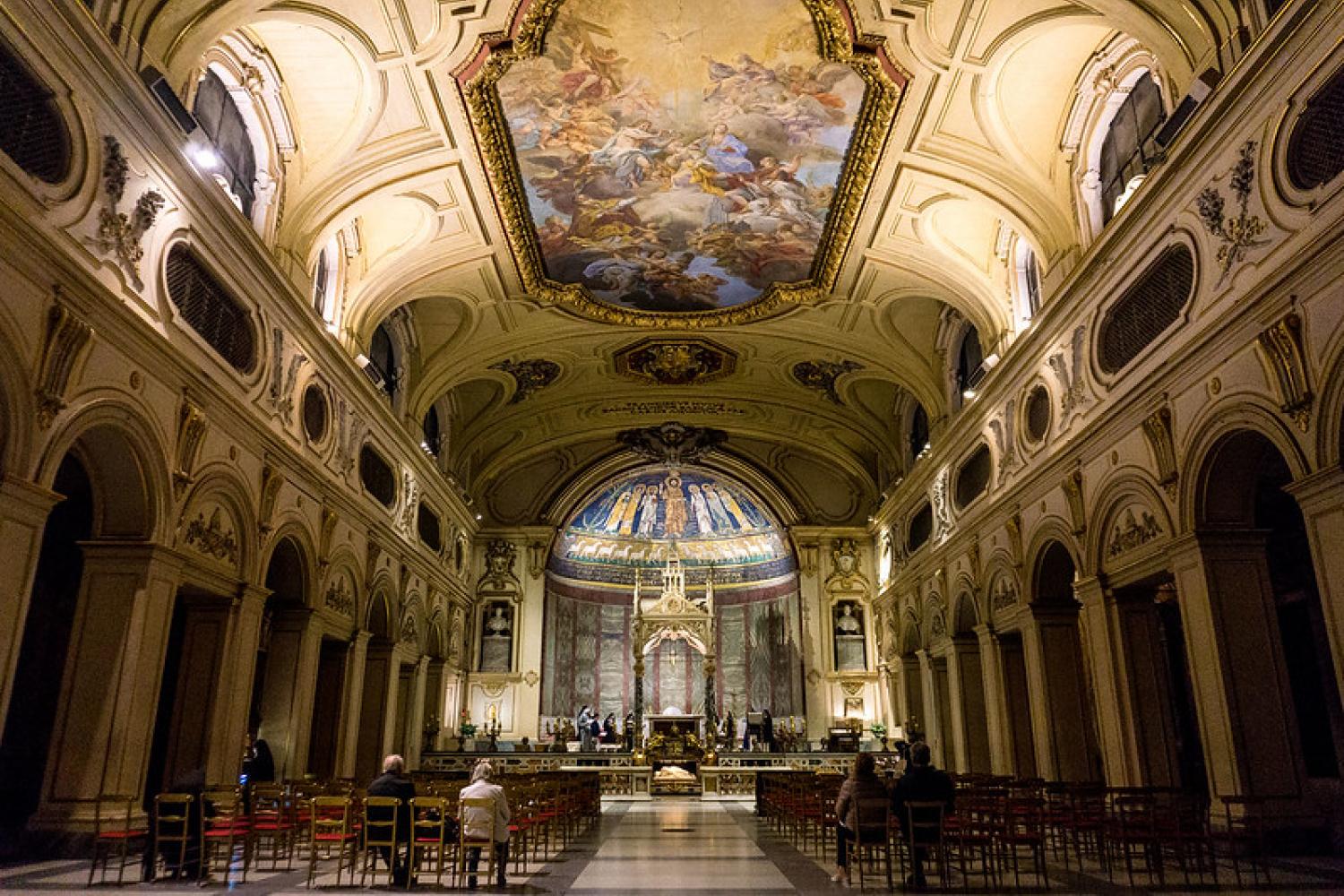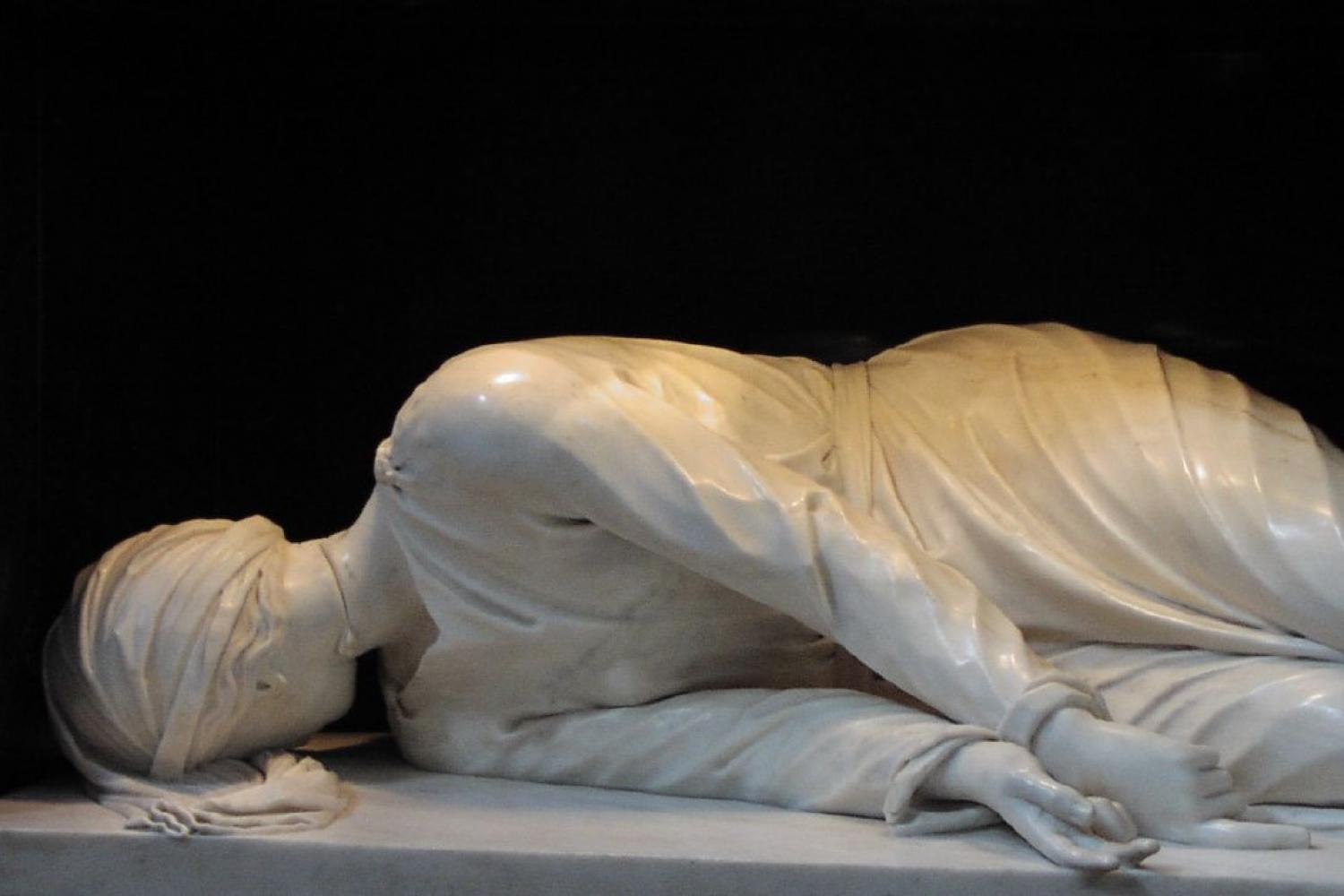
In the Roman rione of Trastevere, near the banks of the Tiber river and across from the storied Circus Maximus, stands an ancient basilica dedicated to one of Rome’s most beloved saints. The Basilica of St. Cecilia in Trastevere, built over Cecilia’s home and the site of her martyrdom, houses her incorrupt body and reminders of the vast centuries of Church history.
Saint Cecilia was born into a wealthy and powerful Roman family in the early third century. Raised as a Christian, she dedicated her life to God in virginity even while she was betrothed to a pagan noble, Valerian. Cecilia informed Valerian of her commitment on their wedding night, telling him her virginity was watched over by an angel and that he would only be able to see the angel if he accepted baptism. Valerian was baptized and saw the angel that guarded his wife. The experience brought him to a profound conversion. He was eventually martyred for his public acts of faith, and the Roman authorities sought out Cecilia at her home to execute her, as well. After finding himself unable to completely sever Cecilia’s head from her body, the executioner fled, and as she lay dying Cecilia arranged for her home to be preserved as a site of Christian worship. Cecilia has long been venerated as one of the most beloved martyrs of ancient Rome and is perhaps best known as the patron saint of musicians. This attribution arises from a recounting of her life in which she is described as “singing in her heart to God only” at her wedding.
The original church, it is believed, was put in place in the decades after her death, but the church was rebuilt in the ninth century, and its façade was added in the eighteenth century. The bell tower and atrium were added in the thirteenth century. Pilgrims pass by a thirteenth-century fresco of the Last Judgment as they enter the basilica, where they are greeted by ninth-century mosaics in the apse and eighteenth-century frescos in the nave, all under a ceiling decorated in the fifteenth century.
While Cecilia was originally buried in the Catacombs of St. Calixtus, her body was transferred to the Trastevere basilica in the ninth century. In preparations for the Jubilee of 1600, the cardinal of the Trastevere basilica, Paolo Sfondrato, ordered extensive renovations that included the excavation of the saint’s body. Upon discovering her to be incorrupt, appearing as if in restful sleep, Sfondrato commissioned Stefano Maderno to sculpt Cecilia exactly as her body had been found. That sculpture, pictured below, shows the saint’s face covered, with the wounds of her execution visible and her hands frozen in remembrance of the Trinity: three fingers are raised on her right hand (including her thumb) and one finger is raised on her left hand. Cecilia was re-interred beneath the high altar, while her statue is displayed in front of it. A copy of the statue was later placed within her original burial place in the Catacombs of Callixtus.
Photo Attribution A: "S. Cecilia in Trastevere" by Bernard Healy is licensed under CC BY-NC-ND 2.0.
Photo Attribution B: "St. Cecilia's Martyrdom" by Sébastien Bertrand is licensed under CC BY 2.0.

The First Draught
To receive the Weekly Update in your inbox every week, along with our weekly Lectio Brevis providing insights into upcoming Mass readings, subscribe to The First Draught.

